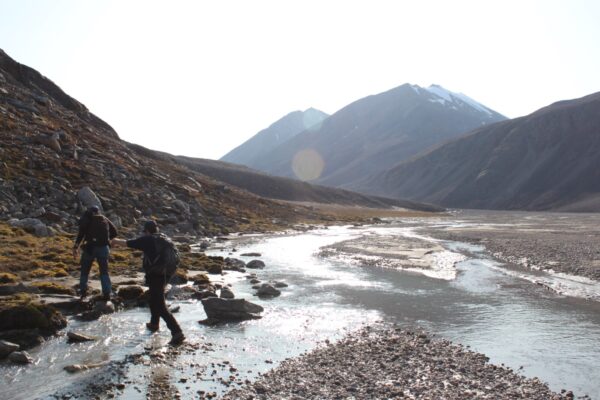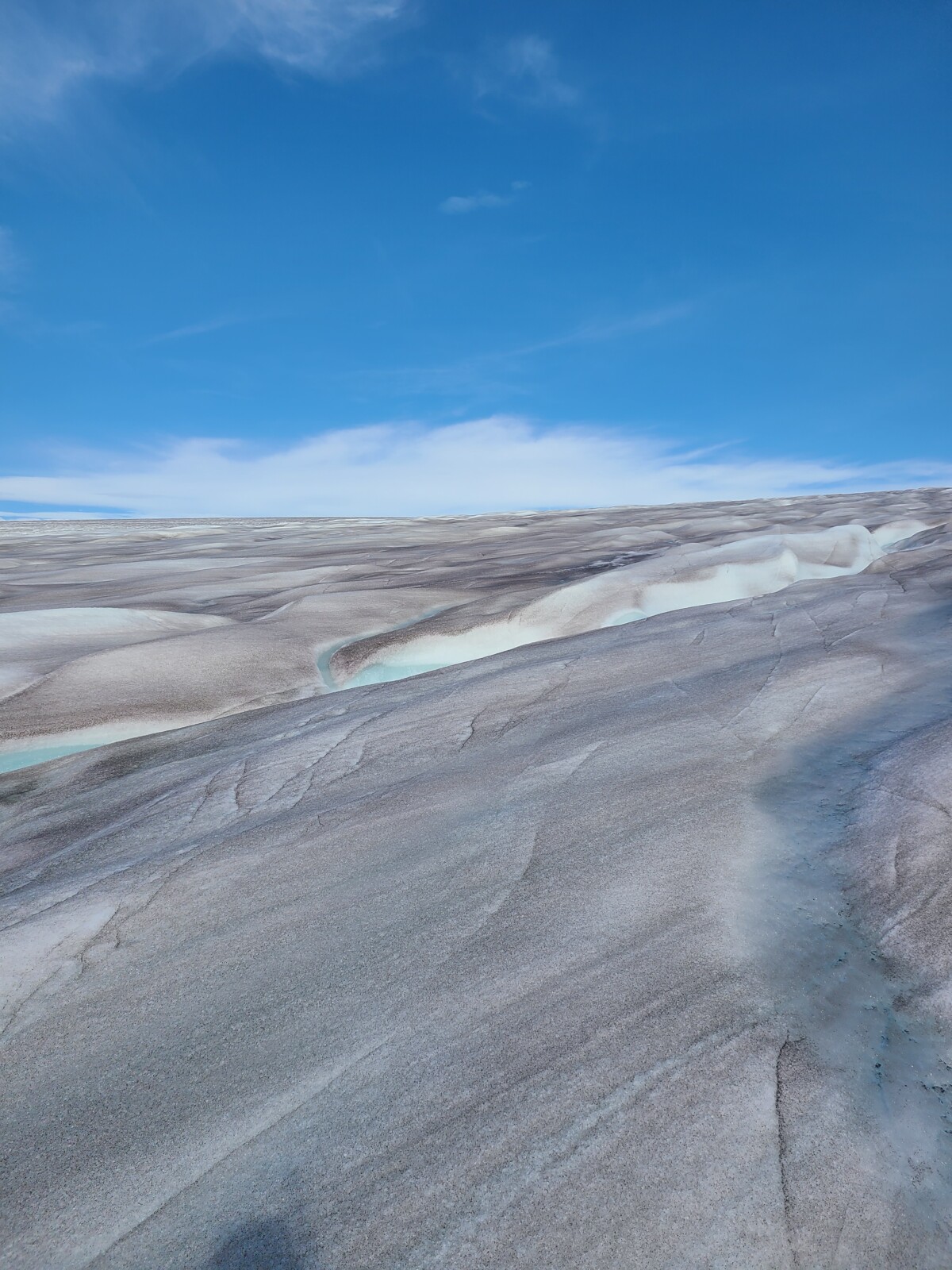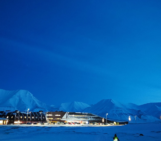
You might have missed our weekly blog posts, but we are back! This week’s post highlights four field work campaigns our cryo community conducted. Join us on a journey to Greenland, Svalbard and Alaska to learn about methane emissions, glacier flows, tundra fires and ice microbes.
Chasing methane in Greenland
The subglacial environment of the Greenland Ice Sheet is a relatively new discovered source of methane, a potent greenhouse gas. Curious and intrigued about the quantity, the age and the source of this gas, we, the CryoEco team, went in July 2023 to the Leverett Glacier (Greenland) to collect water and gas samples to bring back to Charles University (Prague, CZ). Here we are at the glacier portal during a long sampling day resisting the chilling katabatic wind and the temptation to dip our toes in the ice cold water.
Author: Philip Pika

Photo credit: Philip Pika
Glacier flows in Svalbard
Some glaciers in the world undergo cycles of slow flow and fast flow. These glaciers are unstable, but we don’t fully understand the causes of their sudden speed up and ultimate slow down. In August 2023, we, an interdisciplinary team of researchers from Scotland, Norway and Poland, set out on a field expedition to Svalbard to try and figure out this mystery. We used drones, laser scanners, seismometers, geomorphological analysis and satellite imagery to study the past and present dynamics of Borebreen, a tidewater glacier in central Svalbard. With terabytes’ worth of data to analyse, we are now starting to uncover the secrets of this fascinating process.
Author: William Harcourt

Photo credit: William Harcourt
Alaska’s burning permafrost
Climate and Ecosystems Change research group from the Vrije Universiteit Amsterdam in the Netherlands on expedition to Alaska’s burned tundra to fill critical knowledge gaps regarding permafrost degradation and carbon emissions from tundra fires. This field expedition is part of FireIce (Fire in the land of ice: climatic drivers & feedbacks. FireIce is a Consolidator project funded by the European Research Council and affiliated with NASA’s Arctic-boreal vulnerability Experiment.
Authors: Max van Gerrevink & Lucas Ribeiro Diaz

Photo 1: Group photo (L-R): Thomas Hessilt, Rebecca Scholten, Max van Gerrevink, Lucas Ribeiro Diaz, and Sonam Wangchuk, credit: Savanna Paulsen, Photo 2: Measurements across an unburned landscape, credit: Thomas Janssen, Photo 3: Soil profiling in burned plot, credit: Max van Gerrevink, Photo 4: Group photo (L-R): Sander Veraverbeke, Max van Gerrevink, Lucas Ribeiro Diaz, Sonam Wangchuk, and Thomas Janssen, credit: Lisa Saperstein
Of glacier algae darkening in Greenland
Have you heard about the changing albedo of glaciers before? The Deep Purple field team went to 79N in Qaanaaq Greenland to investigate the ice darkening on the Qaanaaq Ice cap and the Greenland Ice Sheet. Nearly all of the darkening present in the photo was exclusively Ancylonema ice algae! This surprised even our team because a lot of the ice sheet normally contains minerals, bacteria, colored particles, and fungi. More about this fieldwork and our purple algae will be released on 15. September!
Author: Katie Sipes

Photo credit: Katie Sipes
Do you also have a field story to tell or want to share your exciting research? Or would you like to help edit text like this, before you are ready to write your own? Contact us and get your own slot in our weekly blog calendar or spot in our team of editors.
Further reading
- On William Harcourt’s research page you can find the groups research diaries.
- The VU Climate & Ecosystem Change team also wrote a blog post for NASA.
- Deep Purple Group also has a blog.
Compiled and edited by Lina Madaj & Maria Scheel




